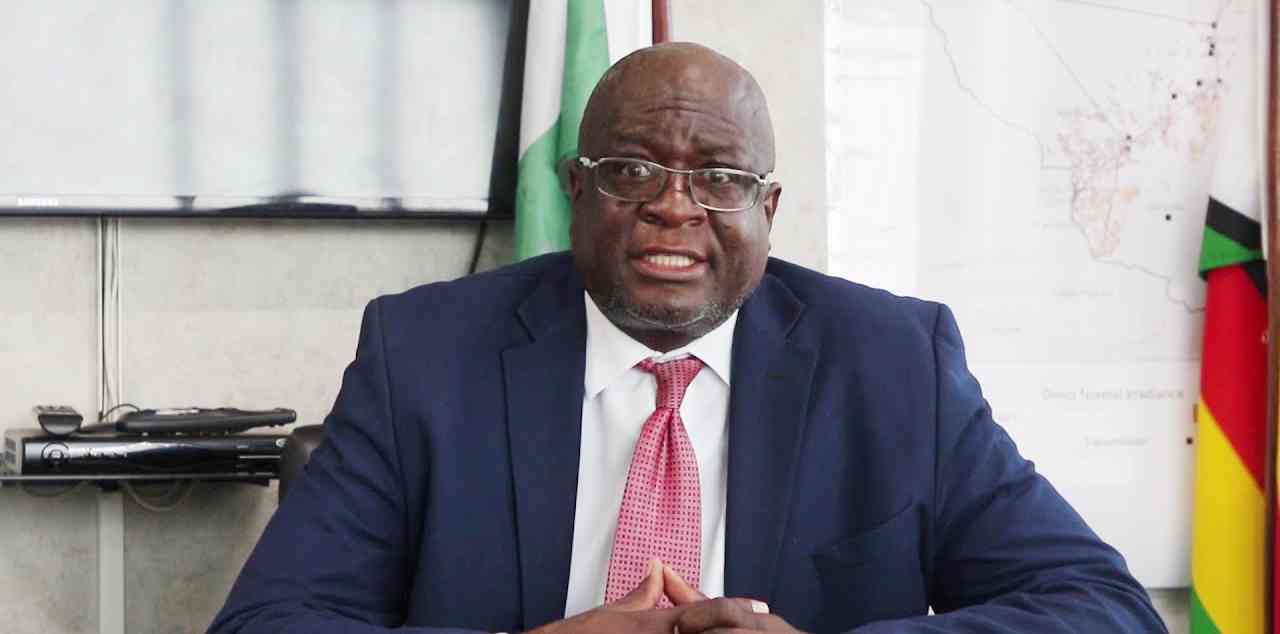
In a January 2018 photo, former reality show contestant Leah Wangari shows cabbages at an agricultural training farm in Limuru, near the capital Nairobi, in Kenya.
While agriculture is the dominant sector in many African countries, employing more than 60% of the population and contributing about 23% of GDP. And yet, the Food and Agriculture Organisation estimates that the continent could produce two to three times more grains, cereals, horticultural crops and livestock among others.
The finance minister of the Democratic Republic of Congo explains that poverty and lack of access to critical resources like energy and water play a huge role in preventing the continent from achieving its potential.
“On the 155 million of tropical forest that we have in DRC we lose 1 million per year and it is too much, Nicolas Kazadi Kadima exclaimed. The protection of the environment is above all a question of development.”
Patrick Verkooijen, the CEO of the Global Centre on Adaptation believes effects of climate change are holding back the productivity of the agricultural sector, citing the projection that up to 30% of maize produce will be lost because of increasing temperature on the continent.
“We need to introduce for example, drought tolerant seeds which can withstand the shocks of the climate emergency, the CEO of the solution broker for adaptation action said. We need to plant trees, we need to use agroforestry and we need to make products fit for purpose to access global markets.”
Supporting 30 million smallholder farmers
The Global Centre for Adaptation and the African Development Bank committed to raising $25 billion in Africa by 2025. Allocating half of the funds to 30 million smallholder farmers through the Africa adaptation acceleration program.
- Chamisa under fire over US$120K donation
- Mavhunga puts DeMbare into Chibuku quarterfinals
- Pension funds bet on Cabora Bassa oilfields
- Councils defy govt fire tender directive
Keep Reading
Philip Boahen from the Africa Development Bank says adoption of conservation practices could play a huge role in conserving the soil and improving the biomass on the surface, and thus boosting productivity.
“One of the most important aspects of introducing conservation agriculture is planting trees, Philip Boahen, the chief Agriculture policy economist, AfDB explained. We support farmers with economic trees so they can produce more for income.”
The bank also partnered with the government of Ghana to implement the Savannah investment programme which has tremendously boosted the production of maize, soya, rice and other food crops.
“Farmers that used to get below two metric tonnes per hectare, are currently recording 6.25 metric tonnes per hectare for maize and 2.5 metric tonnes for soya”, Felix Darimaani the Ghanaian ministry of Food & Agriculture detailed. He is also the national project coordinator. “We have produced over 350 000 metric tonnes of various food items that support agriculture in Ghana generally.”
The Savannah Investment project aims to reduce imported animal protein, improve food security in Ghana and expand the poultry industry.
“The President has supported farmers grow over 120 000 hectares of maize and soybean and rice that is producing over 300 000 metric tonnes of food items”, Philip Boahen revealed.
Following the success of the project in Northern Ghana, the bank is replicating this model in other African countries including Nigeria, Zambia, Ivory Coast, Uganda and Kenya. — africanews











